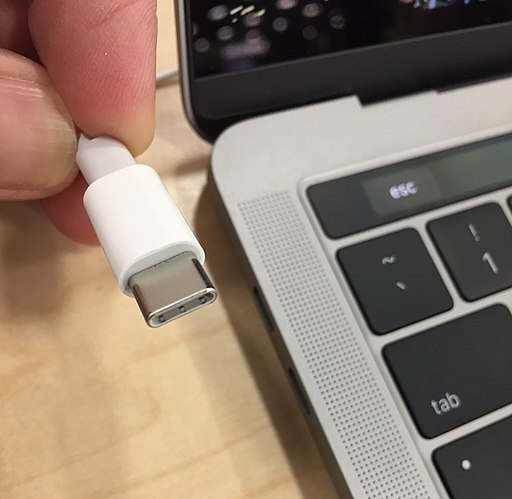Why does iPhone lack USB-C?
New EU requirements
June 7th, 2022, EU adopted USB-C as a mandatory common standard for all mobile chargers.

By autumn 2024, USB-C (Universal Serial Bus C) ports will be the standard for all new mobile phones, tablets, digital cameras, headphones and portable speakers.
Apple against the current
Competitors have already switched to USB-C, but Apple lags behind. To understand why, we need to look back.
Back in 2012, the iPhone was still using its old wide plug, inherited from the first iPods. There was no USB-C alternatives, only Micro-USB as the standard for smartphones. None of the solutions were particularly satisfactory.
Apples golden egg
Then, September 2012, Apple launched its Lightning plug. It was small and elegant and could be plugged in both ways with a reassuring click. This was a small technological step in the wider context, but it was of great importance for the customer experience.
Last, but not least, for Apple, it was a great economic success.
Since Apple owns the Lightning standard, they control its use. They can set quality standards and demand reimbursement from those who use it. The reimbursement is about four US dollars per product sold. When this is multiplied by the amount of Apple accessories sold, this makes the Lightning plug alone a billion-dollar industry.
Two threats
This market is now threatened on two fronts, demands from customers, and requirements from the authorities. Increased use of USB-C makes this plug preferred by customers. It is more versatile, with the same satisfactory ease of use as Apples Lightning plug.
Further, universal standards can result in fewer chargers needed, with a smaller environmental footprint. This is the main reasoning behind EU’s requirement for USB-C as a universal standard for all electronic products.
What now, Apple?
Apples chargers are already USB-C compatible, but you still need Ligthning cables for your iPhone and accessories. A possible outcome may be that Apple eventually capitulates and introduces USB-C on all products, but probably not before they have to.
In the meantime, they hope to lay the foundation for a new charger-based success.
“Wireless” Qi charging is becoming more common, but has some challenges. Qi has low charging power, and is sensitive to how the phone is placed on the charger. Further, Qi charging can be difficult through phone cases.

Apple has revived its MagSafe brand to launch their solution with improved wireless charging. Using magnets that control the placement of the phone and charging pad, MagSafe offers rapid Qi charging, even through case. The solution is not revolutionary, but an easy and secure solution that makes charging Apple’s products more fun, while being secured with patents and other rights they own.
Magsafe is a fine charging solution in its own right, but the real benefit lies ahead. If Apple goes to pure Magsafe charging, the phone won’t need any plugs at all. This removes the last opening in the iPhone, letting Apple offer improved water- and dust proof product.
A new billion-dollar industry?
Most importantly for Apple, MagSafe wireless charging may let them bypass EU requirements for USB-C, while creating a new billion-dollar industry for MagSafe accessories.
Their benefits in doing this, must of course be weighed against the cost of not giving customers the USB-C plug they want here and now.
This use of rights may seem cynical, but proprietary solutions does promote improvements. By ensuring exclusivity, Apple has reaped the benefits their invention provided, and just as important, they have ensured that compatible equipment works as it should, protecting their brands reputation.
Further, marketing and sales will always keep the rights in check. Financially, Apple cannot force a pure MagSafe solution unless this gives customers an experienced advantage they are willing to pay for.
We can see this at Apple’s Worldwide Developers Conference (WWDC2022) the same week as the EU rules were adopted. Among other things, Apple presented a new solution, Continuity Camera, which lets you hook your iPhone to a MagSafe connector on your screen, to use the phone’s superior camera for video conferencing. By adding such innovative functionality, Apple can make their MagSafe-solution worth it, further tying the customer to their ecosystem.
Whether you’re developing new smartphones, ski bindings, diving gear or anything else, the commercial aim should be the same.
By combining new and improved solutions, with smart strategic rights, you ensure the best results for both your company and your customers.
About the Blogpost Author
 Andreas Sætre Hanssen is an Intellectual Property Lawyer, LL.M. and MIPLM, securing businesses competitive advantages using strategic IP services and management.
Andreas Sætre Hanssen is an Intellectual Property Lawyer, LL.M. and MIPLM, securing businesses competitive advantages using strategic IP services and management.
With his company Zipip, Andreas is building new smarter IP-services.
Andreas has a wide prior experience within IP and corporate law from The Norwegian Industrial Property Office, major Norwegian law firms, and Onsagers AS.



